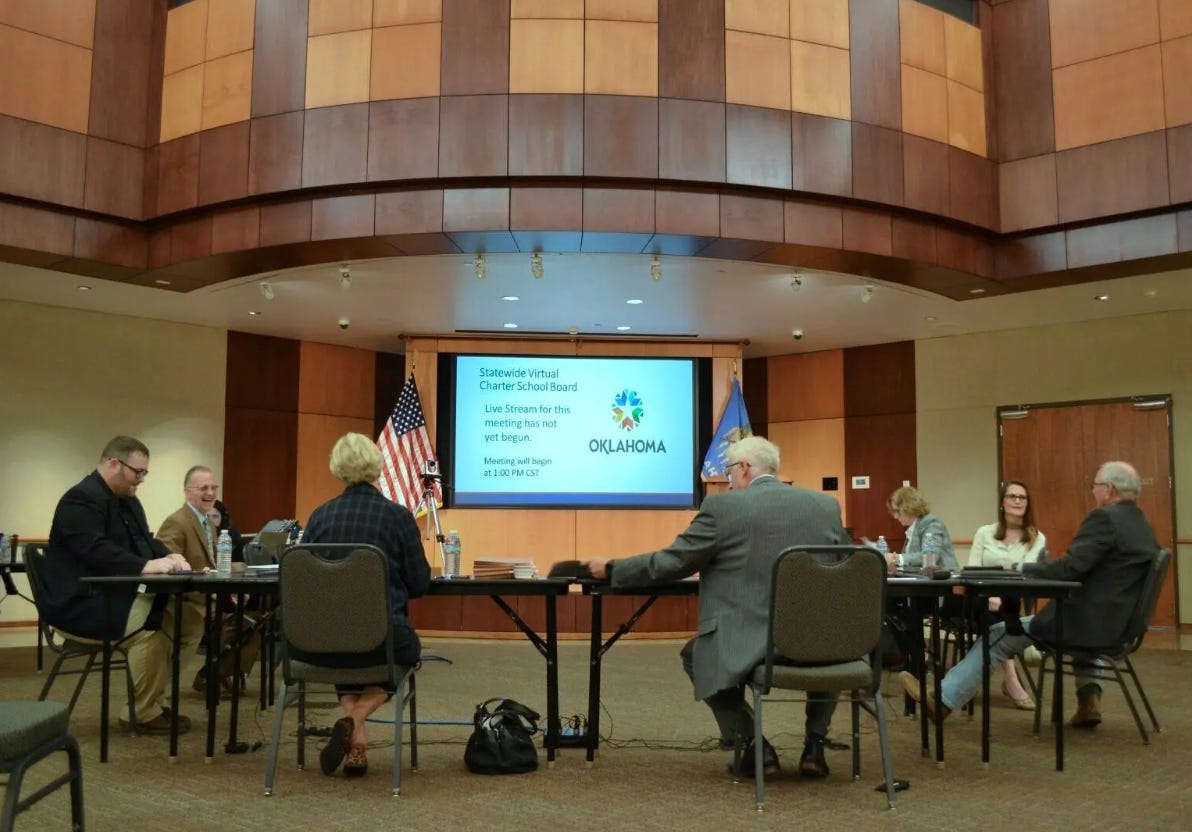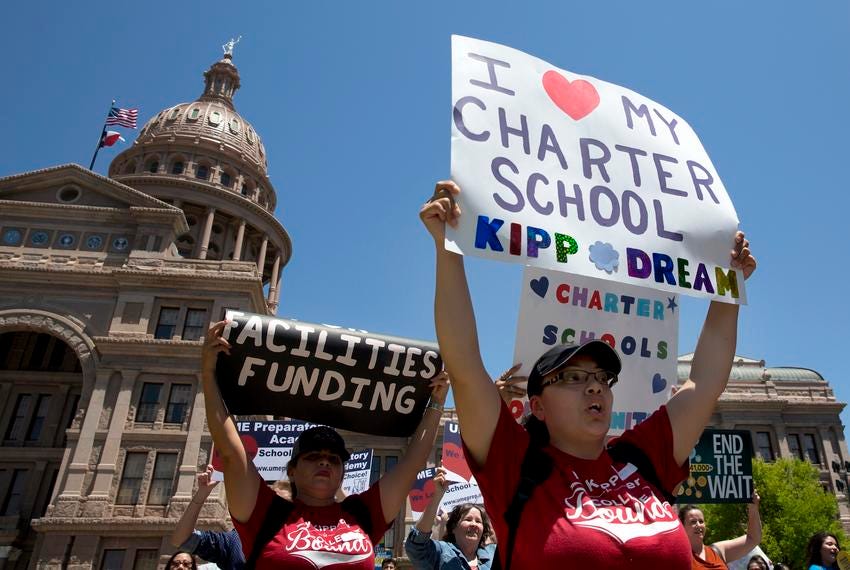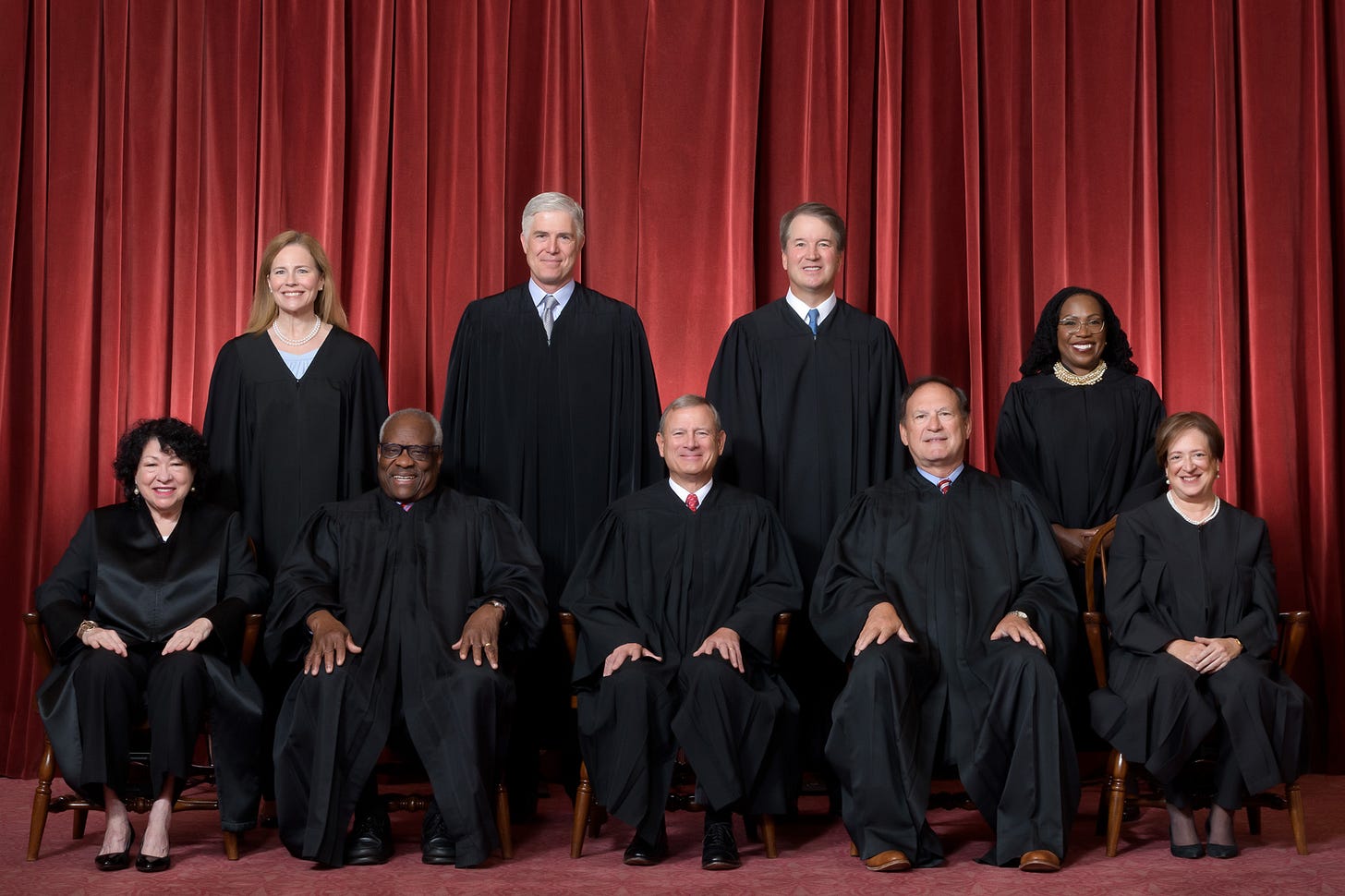SCOTUS to Decide if Religious Schools Get Taxpayer Money
Today, the Supreme Court will hear one of the biggest cases about education since Brown v. Board. It’s one that could impact the nearly four million students who currently attend charter schools and tens of millions more who don’t. Let me get you up to speed before today’s oral arguments:
At issue are two cases that have been consolidated into one. Both deal with a charter school in Oklahoma, called St. Isidore of Seville Catholic Virtual Charter School. This case raises huge questions about the First Amendment, taxpayer money, and what it truly means for a school to be regarded as public.
What’s a Charter School?
In the US, public schools are paid for by taxes and run by the government. Private schools charge tuition and make their own rules. Charter schools are public schools, created, regulated, and funded by the government, but they are run by other groups, like nonprofit entities or even for-profit companies. They have more freedom to decide what and how to teach, but they still must comply with state education laws.
Because charter schools are public schools and are funded by taxes, they are generally required to be non-sectarian. This is echoed by Oklahoma state law.
St. Isidore created a charter school that was intended to teach Catholic values, including things like prayer and evangelism, but it still wished to receive public funding like any other charter school.
In 2023, the Oklahoma Statewide Virtual Charter School Board approved St. Isidore’s application to become a charter school, a move supported by Oklahoma’s governor, Republican Kevin Stitt.
But Gentner Drummond, the Oklahoma attorney general and also a Republican, said this approval violated state and federal law. He filed a lawsuit asking the state supreme court to block the school’s charter approval.
“The approval of any publicly funded religious school is contrary to Oklahoma law and not in the best interest of taxpayers,” Drummond said. “It’s extremely disappointing that board members violated their oath in order to fund religious schools with our tax dollars. In doing so, these members have exposed themselves and the State to potential legal action that could be costly.”
The school and the Catholic archdiocese then filed a suit against Drummond, claiming that his actions discriminated against their religious faith.
The Constitution says that the government is not permitted to establish nor to prevent the free exercise of religious faith. This is why students are free to pray at school if they wish to, but the teacher can’t lead the class in a prayer. One is the free exercise of students, the other is the government establishing a religious preference. So can a religious group with a faith-based curriculum run a public school and still receive tax funding?
It’s not a simple yes or no.
Here are the basic legal arguments:
From the school:
St. Isidore, named after the patron saint of the internet, is asking the court to make an important distinction between state-sponsored religion and religious charter schools. They say that they have a contract with the state of Oklahoma to educate the children of Oklahoma. As a contractor, they are allowed to have religious views, and to carry out the services they are contracted for in a manner consistent with those views.
The school contends that even though the government is contracting with a religious organization, it is not establishing or endorsing that religious faith. They cite prior Supreme Court precedent from a 1982 case (Rendell-Baker v. Kohn) that found it was not necessarily a state action if “a privately operated school provided free publicly funded education through a contract with the government.”
They also say this decision will have implications for other religious groups that contract with the state to provide things like adoption services.
They claim that the word “public” in this context does not mean “government entity,” it simply means they do not charge tuition. By contrast, a private school is one where people are expected to pay tuition.
The fact that the state is banning participation in the taxpayer-funded charter school program on the basis of religious affiliation constitutes religious discrimination, the school says, and the state is not establishing a religion because it treats the religious charter school as equal to the non-religious charter school.
And finally, the school claims, there is historical precedent for the government’s funding of religious schools.
(But permit me a small sidebar. One of the primary manners in which the government nationwide used to fund religious schools was in the context of paying religious groups to run boarding schools for Native American children. Schools where students were forcibly removed from their families and involuntarily sent to residential schools, were disallowed from speaking their primary languages, had their hair cut, were forced to wear European dress, and had to comply with the religious teachings of the organization that was running the school.
I have an entire nine-part podcast series on the Native American boarding school system, here. So making the argument in the context of how the US government used to try to “educate the Indian out of children,” as evidence for why they should now use taxpayer money to fund religious schools in Oklahoma, may not hold water with this Supreme Court — this is a wrong the US has been making some strides to try and make right, although justice has been very slow to come.)
From the Attorney General:
Gentner Drummond says that he agrees with the general principle found in the case Carson v. Makin, that states cannot exclude religious schools from receiving a public benefit available to others. But that case, Drummond says, is about a time when the state chose not to provide the service for themselves.
(For context: the state of Maine is so rural that many areas do not have public high schools. Instead, the state provides a tuition benefit for private schools to pay for the education of its children. This Supreme Court case found that Maine could not exclude religious schools from receiving the tuition benefit.
But the distinction between Carson and this case lies in the fact that in Maine, the state was choosing not to provide public schools. In Oklahoma, they do have public schools, and Oklahoma law requires that those public schools provide a secular education.)
Drummond disagrees with the idea that the main question the court must decide is whether or not charter schools are state actors, as St. Isidore claims. Drummond says the real question is whether charter schools are public schools.
And according to Drummond, the answer to that question is clear. It’s yes. Charter schools are free, open to everyone, subject to state education laws regarding discrimination, and created and funded by states.
Follow the logic: If charter schools are public schools in the traditional sense and not in the definition proposed by St. Isidore, by definition, public schools are government entities. If they are government entities, then they cannot establish a religion, because doing so violates both state law and the First Amendment.
Charter schools are not like adoption agencies or nonprofits that have access to government funds, Drummond says, because charter schools are fully integrated into a system of schools that are run by the state. Other groups are not created and run by the state.
Derek Black, a constitutional law professor and director of the Constitutional Law Center at the University of South Carolina, told The Preamble, “There are certain things that are not up to a popularity vote, there are certain things that are not up to policy questions. Those things are in the Bill of Rights, and so we determined two centuries ago that there has to be that the state doesn't get to run religion. The state doesn't get to take tax dollars from one citizen and put it into the coffers of a church.”
Why This Could Change Everything
If St. Isidore prevails, it could completely upend how schools are funded nationwide, which is considered a win for some school choice advocates, who want the right to direct public funds to the learning institutions of their choosing, including religious ones.
But in a case of “be careful what you wish for,” there are two other potential implications that religious groups may not relish: because states must comply with federal and state educational laws, state funding could subject religious schools to what they perceive as too much governmental intrusion into their beliefs and practices.
Does the Catholic Church want the government telling them how to administer the sacrament of communion in a nondiscriminatory manner? Do Baptist schools want the government telling them that they have to allow students to form LGBTQ+ after-school clubs? And these are just two of a litany of examples of how the intermingling of public funds might bring unwanted governmental intrusion into the sacred religious teachings of various groups.
Black said, “I had a charter school operator who also has operated religious schools, and she thinks this is a bad idea as a matter of policy, because she says, ‘Look, once the government gets its hooks into religion, it can also start dictating rules of religion.’”
Secondly, an organization of charter schools says that if charter schools are not found to be public schools by the Supreme Court, then many, if not most, of them will lose state funding, and they will cease to exist. According to the National Center for Education Statistics, nearly four million students attend charter schools nationwide, and declaring that charter schools are not public will result in less school choice overall.
Bottom Line:
The Supreme Court is being asked to examine the lines drawn between church and state, and this case has the potential to change where those lines are in a major way.
St. Isidore of Seville School might be the first religious charter school in the country. But depending on what the Supreme Court decides, it might not be the last.
According to Black, “The plaintiffs are asking the court to redefine what it means to be a public school…asking…the court to…effectively privatize public education. So that instead of being free and open to all, they're exempt from those rules…that has never been an issue that the Court has confronted. No one has ever asked the Court to effectively redefine what public education is and let private actors instead of publicly accountable officials determine what public schools will be.”
Amy Coney Barrett has recused herself from this case. Should the Court be tied 4–4, the decision of the lower court, which agreed with the arguments presented by Gentner Drummond, will stand.
Should public money pay for religious education?
The Supreme Court is about to answer.











Am I the only one who didn’t know there was a patron saint of the internet?
The issue I have with any Charter School (religious or non) or religious schools getting tax payer funds is that children will no longer have equal access to education. The thing most people don’t consider is that these schools are allowed to turn students away. They don’t have to provide services to those with disabilities. They don’t have to deal with learning disabilities. It’s not much choice if schools can opt out of educating certain people.